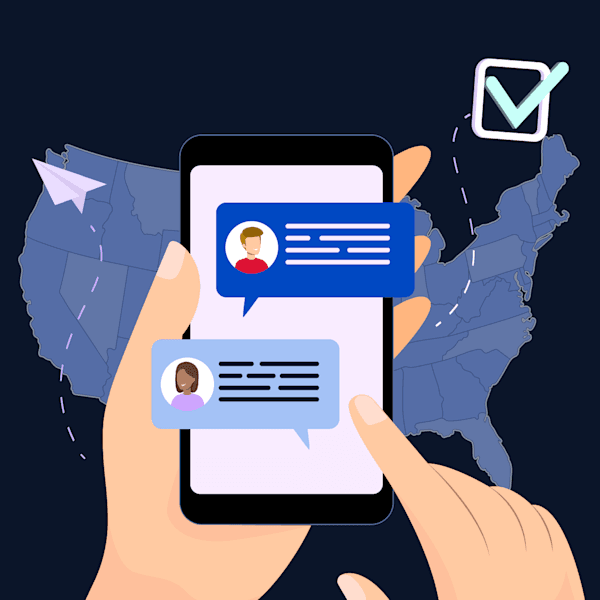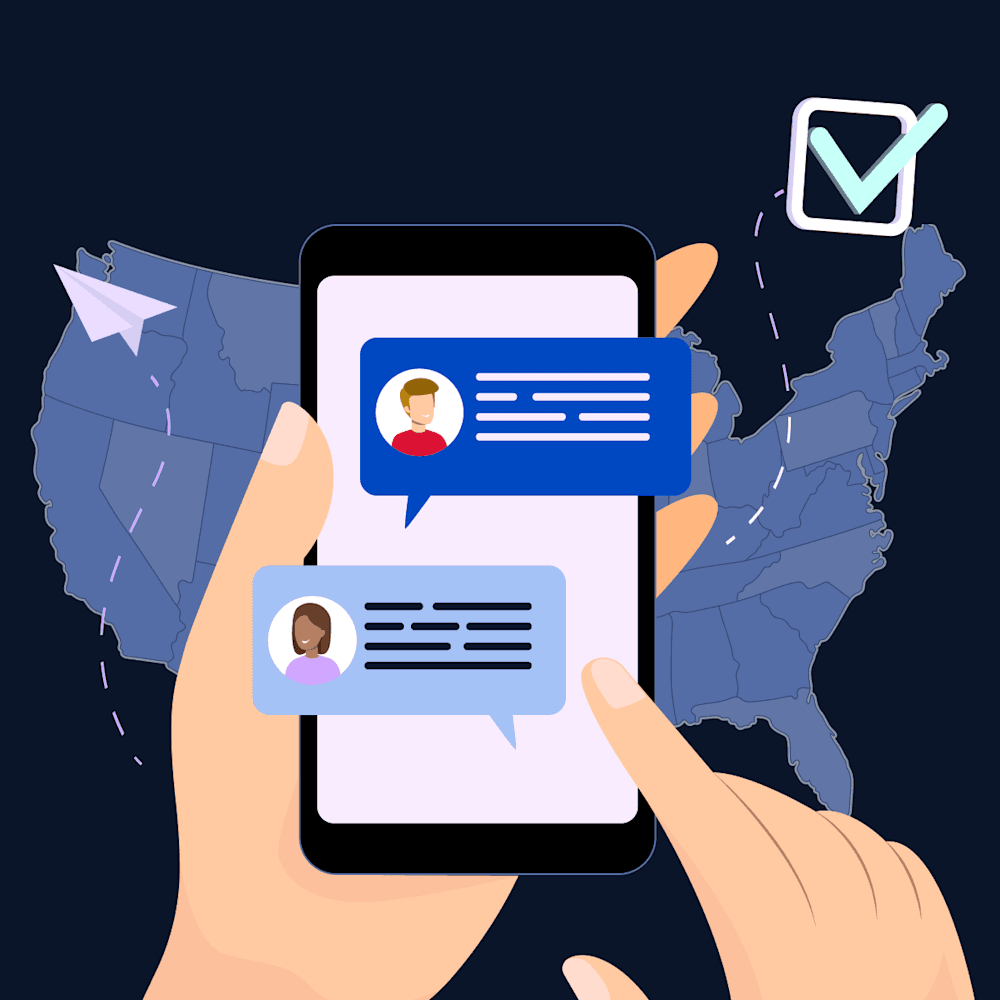
Media Planning Strategies for Local Political Candidates
If we lived in a perfect political world, qualified candidates would get elected on their good ideas alone. Unfortunately, political campaigning is also a form of marketing that requires candidates to sell themselves and their policy proposals to the electorate.
Think about all of the politicians from history who were able to inspire voters with their words — people like John F. Kennedy, Barack Obama, and that “Great Communicator,” Ronald Reagan — and you will understand that being a good politician also involves being an effective communicator.
For the average person, the thought of public speaking or appearing on the local news can be a frightening prospect. But, politicians must overcome stage fright and learn how to use media effectively if they want to get elected.
That means developing an understanding of multiple media platforms and learning how to use them strategically.
Media Training for Political Candidates
Media training is a comprehensive process that equips political candidates with the skills needed to communicate effectively with the media and the public. It involves taking information in, such as voter data, social media analysis, voter feedback, and other statistical information, and using that data to develop and refine a voter outreach strategy.
Media training covers several key areas:
Message Development: This involves developing the ability to craft clear, concise messages that resonate with the target audience. Candidates should learn to focus on their campaign's core themes and values.
Public Speaking Skills: Training in public speaking helps candidates deliver speeches and statements with confidence, clarity, and charisma.
Interview Techniques: Candidates should learn how to handle various types of interviews, navigate tough questions, and stay on message.
Body Language and Non-Verbal Communication: Non-verbal cues are crucial in conveying sincerity and confidence. Such training includes mastering positive body language.
Crisis Communication: This means preparing for potential controversies or crises and learning how to respond effectively to mitigate negative impacts.
Media Etiquette: Gain a clear understanding of the norms and expectations of interactions with journalists and media personnel.
If you’re uncomfortable talking in front of a crowd of people or one-on-one during an interview, you can practice in front of people you’re comfortable with or even in front of the mirror. Make sure to get constructive feedback from your practice audience. Making a video of yourself practicing a speech or an interview will also help you see yourself as your audience sees you.
Taking a course or attending a seminar on public speaking can help you develop skills and techniques that will make it easier to communicate in public effectively. You can find plenty of examples on platforms like YouTube or LinkedIn, and many colleges offer such courses online.
Types of Media for Local Political Campaigns
Modern political campaigns have many more platforms available to them than in the past. Independent candidates can especially save on their media budget by leveraging social media, which offers a combination of free engagement opportunities and paid, targeted ads.
Local political campaigns should deploy a mix of traditional and digital media platforms that include:
Traditional Media:
Local Newspapers and Magazines: Op-eds, interviews, and news coverage in local print media can reach a wide demographic, including older voters.
Radio: Local radio stations, including talk shows and community-based programming, offer opportunities for reaching listeners during commutes.
Television: Local news channels and community TV provide a platform for interviews, debates, and campaign ads.
Digital Media:
Social Media: Platforms like Facebook, Twitter, Instagram, and LinkedIn allow you to communicate with voters directly. Live streams, posts, and online Q&A sessions are also effective ways to engage.
Websites and Blogs: A campaign website is an essential central hub for information, policies, candidate bios, and campaign news. Blogs can provide deeper insights into issues and campaign updates.
Email Campaigns: Regular newsletters and email blasts keep supporters informed and engaged.
Podcasts and Webinars: These platforms provide opportunities to discuss policies and campaign issues in-depth.
YouTube and Video Content: Videos, including campaign ads and issue explainer videos, are engaging ways to reach a wider audience. For shorter content and the ability to reach younger voters, consider making Reels or TikTok videos.
The Importance of Media Training
Not all of us are natural-born communicators. That means you should engage in some sort of basic media training to help avoid rookie mistakes and present a more polished, professional image. You should be confident in your message, and you should want to convey that confidence to voters.
Effective media training helps candidates by:
Ensuring that your campaign's core messages are communicated clearly and consistently
Shaping and maintaining a positive public image
Preparing your campaign team to handle negative publicity effectively
Enhancing your ability to engage and connect with voters
15 Practical Tips for Media Interaction
Understand Your Audience: Know the demographics, interests, and concerns of your electorate. Tailor campaign messages to resonate with different groups.
Stay Informed: Keep up-to-date with local, national, and international news. A well-informed candidate can respond more effectively to media queries.
Practice Makes Perfect: Regularly practice for interviews and public speaking opportunities. Role-playing different scenarios can be helpful.
Develop a Strong Online Presence: Regularly update social media with relevant content. Engage with followers through comments and live sessions.
Be Proactive with Media Relations: Don't wait for the media to come to you. Reach out with press releases or story ideas, and communicate your availability for interviews.
Monitor Media Coverage: Keep track of how the media portrays your campaign. Use this information to adjust media strategies as necessary.
Utilize Visuals: People respond to visual content. Use images, infographics, and videos to make your messages more engaging.
Be Authentic and Transparent: Authenticity builds trust. Be open about your policies, beliefs, and campaign goals.
Learn from Feedback: Constructive criticism from media interactions can be invaluable. Use it to improve future performances.
Build a Supportive Team: Surround yourself with a skilled team, including a media advisor, to help navigate the media landscape.
Stay Consistent Across Platforms: Ensure your campaign messaging is consistent across all media channels.
Prepare for Crisis Situations: Have a crisis communication plan in place. Quick and appropriate responses can mitigate negative impacts.
Respect Journalistic Integrity: Understand and respect the role of journalists. Building mutual respect can lead to fairer coverage.
Use Media Analytics: Use digital tools to analyze the reach and impact of your media appearances and adjust strategies accordingly.
Continuous Improvement: Media landscapes evolve rapidly. Stay adaptable and continually refine your media strategies.
9 Tips for Developing a Budgeting and Planning Strategy
Setting a media budget for a local political campaign is a crucial aspect of campaign planning. It involves careful consideration of various factors to ensure the most efficient allocation of resources.
Here's a breakdown of key elements to consider:
1. Assess your overall campaign budget.
Determine the total amount of money that’s available for the entire campaign. This will be the ceiling for all campaign expenses, including media spending.
Next, you’ll want to identify key areas where spending will have the most impact. For local campaigns, media spending is often a significant portion, but the campaign’s media budget should be balanced with other essentials like staff salaries, event costs, and distributing campaign materials.
2. Get to know your audience.
Research the demographics of your constituency and use analytics to gain some insight into their media consumption habits. This information will provide guidance about where to allocate media spending, such as ad spends on social media, local TV, and radio.
3. Choose media platforms wisely.
Mix and match your media strategy to fit your target audience. For example, older voters might be more responsive to traditional media outlets like newspapers, radio, and TV. Younger and more tech savvy constituents interact more with digital media platforms, such as social media, online ads, and email marketing campaigns.
Digital platforms also offer more targeted and cost-effective options for local campaigns, and they come with tools to help control spending and target specific demographics.
4. Allocate your budget based on goals and metrics.
Before you begin, work closely with your campaign team to determine budget allocation requirements. What are you trying to achieve with each media buy? Whether the goal is to raise awareness, voter registration, fundraising, or some combination of each of these, your answers will inform your finding strategy.
It’s also important to consider engagement rates, reach, cost-per-click (CPC), and other relevant metrics to allocate funds more effectively.
5. Monitor and adjust your strategy.
At every stage of your campaign, it’s important to regularly monitor how your media spending is performing against campaign goals. Be prepared to adjust your strategy and reallocate funds as needed based on what’s working.
Don’t double down if a platform isn’t getting results. Shift your strategy and funds to leverage the platforms that are working for you.
6. Negotiate and build relationships.
Keep in mind that there may be room to negotiate ad rates, especially in local media markets. In fact, establishing good relationships with local media can sometimes lead to better rates or additional coverage. You should also look for ways to get free publicity, such as hosting an event or volunteering with a local charity or community group.
7. Utilize in-kind contributions and volunteer efforts.
Sometimes local businesses or supporters can offer media-related services like ad design or video production as in-kind contributions. You can also utilize your volunteer force to handle some social media activities like managing social media accounts or creating content.
8. Be mindful of compliance and reporting.
Be aware of legal requirements for political advertising, especially around financial disclosures, donations, and spending limits. Keep detailed records of all expenditures for campaign finance reports and internal tracking.
9. Create a contingency fund.
Expect the unexpected. That means preparing for surprise opportunities or challenges that may arise. In such cases, having a reserve fund can be crucial.
Final Tips
Effective media training and planning is vital for local political candidates. By understanding and leveraging different media platforms, maintaining a consistent and authentic message, and building strong media relations, candidates can significantly enhance their campaign's success and connect more effectively with their electorate.
Media budgeting and training are two ways you can craft a tight, strategic campaign. By understanding your audience, choosing the right platforms, continuously monitoring performance, and being adaptable, your campaign can maximize its impact even with limited resources.
Remember, the key is not just how much you spend, but how wisely you spend it.
Photo by Kane Reinholdtsen on Unsplash

